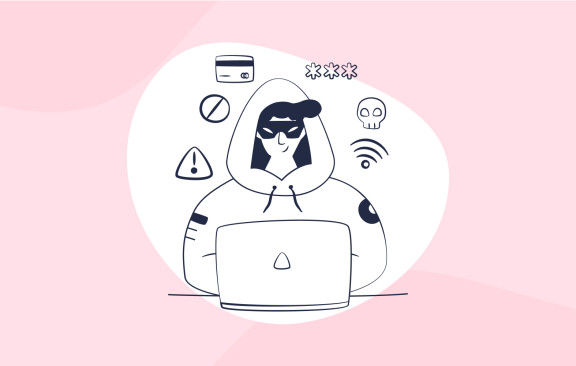Amazon is obsessive about providing customers with the best possible shopping experience, and imposes a high standard for their sellers, especially those who sell in high volumes. If Amazon is unhappy with you, your Amazon account could end up suspended. There may not be any warning; One day you log into Amazon as usual, and you're informed that your account has been suspended. This means that you can no longer sell on Amazon and your funds are held hostage.
Of course, you can always request for reinstatement, but that can take months. You'll also probably be denied, unless the suspension was a mistake on Amazon's part (unlikely). The best thing you can do is to avoid it in the first place, and that involves identifying any potential problems in fulfilling Amazon's policies for sellers.
Common reasons for suspension
According to ChannelAdvisor, the following are grounds cited most frequently by Amazon for suspending a seller's account:
- Selling products that are restricted or prohibited by Amazon.
- Opening a new account when the old account was suspended.
- Opening more than one seller account to sell the same products.
- Poor performance metrics.
The first two are pretty self-explanatory. As a seller (and a reasonable person) you should be able to figure out why you aren't allowed to sell restricted items or open a new account when you've already been banned. The last two, though, are a little tricky.
They deserve to be covered in a bit more depth.
More than one account

Amazon states in its terms of service that having multiple seller accounts is prohibited, except when there are legitimate reasons for the exception. If you have a very good reason for needing two or more seller accounts, you can get approval from Amazon. Beware though: You won't get it if you're not in good standing.
You also need to have a separate bank account and email address for the second account, plus you can't sell the same products on both accounts. You can, however, have more than one associate's account. Amazon doesn't seem to mind that.
Poor seller performance metrics
This is where most sellers run into trouble. Remember how we said earlier that Amazon takes customer satisfaction very seriously? Well, the company has a whole slew of pretty stiff performance targets that you've got to hit in order to stay in good standing. You can monitor your overall account health using the Customer Metrics tool in Seller Central.
Amazon requires all of the following:
- Order Defect Rate: You need to avoid getting negative feedback, an A-to-Z Guarantee claim, or incurring a charge-back. Your overall rate should be less than 1 percent.
- Cancellation Rate: The formula for your cancellation rate is calculated by dividing the number of pre-fulfillment (before shipping) cancellations by the number of orders made within the same time period. Your rate should be less than 2.5 percent.
- Perfect Order Percentage (US sellers only): These are the orders that went through without a hitch, i.e. all sales excluding charge-backs or refunds divided by the number of all orders within a 90-day period. The rate should be 95 percent or higher. Some sellers may have difficulties with this because many returns may be due to buyer error.
- Late Shipment Rate: You can calculate this by dividing the number of orders with delayed shipping (confirmed late by three days or more) divided by the number of orders for the same period. This number shouldn't exceed 4 percent.
When you don't meet the target for any of these performance categories Amazon will notify you that your performance is falling below expectations. At this point, you're usually given 60 days to improve any problem areas. Exceptions include when your performance really has tanked and isn't likely to improve enough within 60 days to make the grade, or if there was a serious policy violation, in which case the account will be suspended immediately.
How to improve performance

This is an iffy question. Dropshippers are especially vulnerable because they don't often exercise much control over their supplier's shipment dates. This can obviously wreak havoc on your Late Shipment Rate. It can also have an effect on other categories because a customer may complain, leave negative feedback, cancel an order, or what have you.
The only thing you can do as a dropshipper is work only with suppliers who have proven their reliability and maintain excellent lines of communication, so you'll never be left in the lurch. Have more than one supplier for the same item just in case your primary supplier runs out of stock.
It is also important that you do some public relations with your customers. If you suspect in the slightest that you're going to have a problem with an order, be proactive and immediately contact the customer to give them a heads up — before they have a chance to complain.
Explain the situation, and offer a freebie or a credit on their next purchase to smooth any ruffled feathers. People like to feel important, and they love free stuff. Don't be stingy with it either, and never try to justify the mistake. Even if the order is penalized for late shipment, you can avoid making it worse by attempting to appease the buyer.
You can also improve your performance rates by increasing sales volume. All of the performance categories are based on the proportion of problem orders to the total number of orders. If you sell 100 items and get 2 problem orders over the same period, that can be trouble. But if you sell 1,000 items instead, then you're still in the black.
However, you should make sure that you aggressively promote items you know you can fulfill without trouble, or else you'll only make things worse.
This is not to say that you shouldn't worry about having one or two unhappy customers. Your target should always be to give 100 percent satisfaction, not just for Amazon's sake, but to build your reputation and create loyalty. That is the surest way to succeed as an online seller on Amazon and anywhere else.
Have you heard any Amazon account suspension horror stories? Tel us about them in the comments.














Hope this helps!
I am honestly not sure! I've never heard of Amazon Ghost (Google doesn't reveal much), but I know based on a friend's experiences that Etsy is /really/ good are recognizing secondary accounts and will continue to ban them if your primary seller account got banned.
I have a hard time imagining that Amazon is any less competent in that regard. The company has a massive amount of resources and probably a very busy risk and underwriting department.
Make sure whatever option you choose is legitimate and completely above-board. You might consider setting up shop on other marketplaces or even your own site to supplement your income.
Good luck!
there must be some notice from amazon , just read them. will help you to get re-instate it.
Tried to create a new account, but Amazon caught on and suspended that one. I was very tempted to buy an Amazon account from Auction Essistance, but still doing some more research on whether or not "stealth accounts" are the best solution for my case.